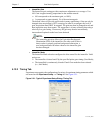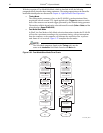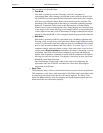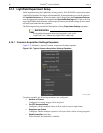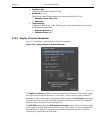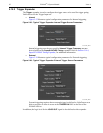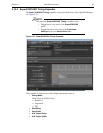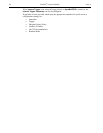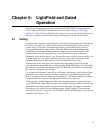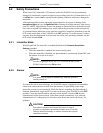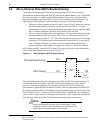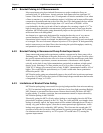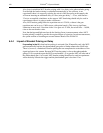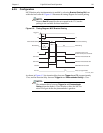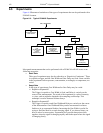
95
Chapter 6: LightField and Gated
Operation
This chapter discusses gated operation with the SuperSYNCHRO™ timing generator as
well as aspects of PI-MAX4 operation that are not covered in Chapter 4, First Light.
Chapter 15, Tips and Tricks, should also be reviewed since it provides helpful information
about how to achieve desired results when performing more complex measurements.
6.1 Gating
Gating provides electronic shutter action by controlling the photocathode bias, allowing the
detection of low light level signals in the presence of interfering light sources of much
greater energy. For instance, in combustion research, a pulsed laser probe is used to
investigate the chemistry within a flame. Since the flame itself emits broadband light
continuously, the integrated flame emission is much greater than the integrated signal
resulting shortly after the laser probe (e.g., laser-induced fluorescence or Raman.)
Fortunately, since the laser pulse is very short and the time at which it occurs is known, it is
possible to gate for a few nanoseconds during the laser pulse, thus reducing the flame
emission interference by approximately the measurement duty factor ratio.
Exposure time is the 'time space' from which charge integrating on the CCD will get
summed into the reported data. Gate width is the time during which light will be detected by
the intensifier, intensified, and applied to the CCD. Basically, the intensifier controls what
the chip 'sees' during the exposure time.
For a signal to be detected, it must fall in a valid gate width during a valid exposure. Many
gate pulses can be placed into one exposure at repetitive or sequential intervals because
there is no temporal measure inside a given exposure [i.e., all incident signals are summed
(integrated) into one value per pixel/super pixel inside a given exposure.]
Using currently available image intensifiers and gate pulse generators, optical gate times
4 ns FWHM (full width at half maximum) are possible. Since the control is electronic, the
gate width can be made virtually as long as desired, allowing a wide range of experiment
requirements to be satisfied in one instrument setup. Further, during UV measurements
where the On:Off ratio is only 10
4
:1, the PI-MAX4’s MCP bracketing feature can be used to
extend the On:Off ratio to 10
6
:1.



